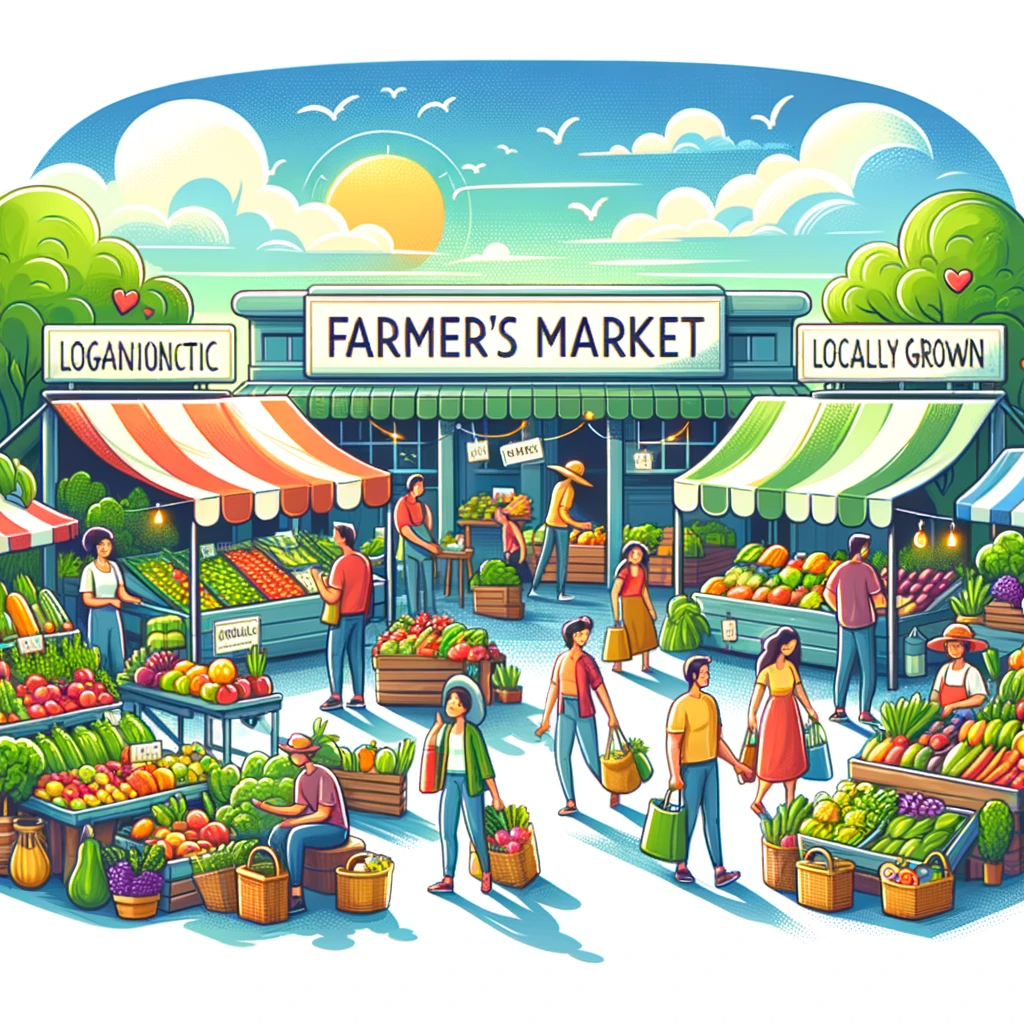In an era where environmental concerns are more pressing than ever, the pursuit of a sustainable lifestyle has transformed from a niche interest into a necessity. But how can we, as individuals, contribute to this monumental task?
The answer lies in adopting simple, yet impactful daily practices that collectively forge a path towards a healthier planet. This article delves into easy-to-implement, yet powerful strategies for living more sustainably, illustrated through vivid imagery that not only informs but also inspires.
Firstly, we explore the profound impact of nurturing nature right in our backyards. A depiction of a person planting a tree symbolizes the growth and renewal we can bring to our immediate environment.
This act, while seemingly small, plays a crucial role in improving air quality, supporting wildlife, and creating greener communities.
Simple lifestyle

Moving indoors, we focus on the power of recycling. A colorful illustration of a family sorting waste into recycling bins within their home highlights the importance of managing our household waste responsibly. This practice reduces landfill waste, conserves natural resources, and minimizes pollution.
Lastly, we venture into the vibrant atmosphere of a local farmers’ market, where buying locally-sourced and sustainable products not only supports our community but also reduces the carbon footprint associated with food transportation.
This image of community members engaging with local farmers and artisans underscores the value of making conscious choices about what we consume and where it comes from.
Each of these images captures an aspect of sustainable living, serving as a visual guide and inspiration for our journey towards a more sustainable future.
Join us as we explore these simple yet profound steps in more detail, understanding how each action, no matter how small, contributes to a larger, collective effort in preserving our planet for generations to come.
11 Simple Tips to Live More Sustainably
1 – Reduce, Reuse, Recycle: Start by reducing waste, reusing items, and recycling materials. Simple actions like using reusable bags, water bottles, and containers can significantly cut down on waste.
2 – Conserve Water: Be mindful of water usage. Fix leaky taps, take shorter showers, and opt for water-efficient appliances. Collecting rainwater for gardening is another great way to conserve this precious resource.
3 – Energy Efficiency: Switch to energy-efficient light bulbs and appliances. Turn off lights and unplug electronics when not in use. Consider smart home devices that help monitor and save energy.
4 – Sustainable Transportation: Whenever possible, choose sustainable transportation options like walking, cycling, carpooling, or public transport. If driving is necessary, consider fuel-efficient or electric vehicles.
5 – Support Local and Organic: Buy local, organic produce to reduce the carbon footprint associated with food transportation and support local farmers. Visit farmers’ markets or join a local food co-op.
6 – Plant-Based Diet: Incorporate more plant-based meals into your diet. The production of plant-based foods generally requires less water and land compared to meat and dairy.
7 – Mindful Shopping: Shop with sustainability in mind. Choose products with less packaging, buy in bulk, and look for eco-friendly and ethically produced items.
8- Home Gardening: Grow your own fruits, vegetables, and herbs. Even small balcony gardens can contribute to your sustainable lifestyle and reduce your carbon footprint.
9 – Compost Organic Waste: Composting kitchen scraps and garden waste reduces the amount of garbage sent to landfills and provides nutrient-rich soil for your garden.
10 – Eco-Friendly Cleaning Products: Use natural, biodegradable cleaning products. Many household cleaners contain harmful chemicals; opting for eco-friendly alternatives is better for the environment and your health.
11- Educate and Advocate: Stay informed about environmental issues and share your knowledge with others. Advocacy and education are key to spreading awareness and encouraging sustainable practices in your community.
Isn’t living sustainably expensive and time-consuming?
This is a common misconception. Many sustainable practices actually save money and time in the long run.
For instance, conserving energy and water reduces bills, while investing in durable, reusable products reduces the need for frequent replacements.
Additionally, sustainable habits like walking or cycling instead of driving can improve health and well-being, saving on potential healthcare costs.
How can I make a significant impact when I’m just one person?
Individual actions can have a profound cumulative effect. When many people adopt sustainable practices, the overall impact on the environment can be substantial.
Moreover, individual actions often inspire others to follow suit, creating a ripple effect that can influence communities and, eventually, larger policies and practices.
Can I still live sustainably if I live in an urban environment with limited access to green spaces?
Absolutely! Sustainable living isn’t limited to those with access to large outdoor spaces. Urban dwellers can practice sustainability in many ways, such as supporting local and sustainable businesses.
Using public transportation, reducing energy consumption, and growing plants in small indoor or balcony spaces. Every small step contributes to a larger change, regardless of where you live.
Conclusion
As we reach the end of our exploration into simple yet impactful ways to live more sustainably, it’s important to remember that the journey towards environmental stewardship is ongoing and ever-evolving.
The 11 tips we’ve discussed are just the beginning; they serve as a foundation upon which we can build a more sustainable lifestyle, step by step.
Living sustainably is not about perfection; it’s about progress. It’s about making more conscious choices every day and understanding the impact these choices have on our planet.
Whether it’s through small acts like using a reusable water bottle, or larger commitments like adopting a plant-based diet, each action you take is a step towards a healthier world.
This journey is not one we walk alone. It’s a collective endeavor, shared with millions around the world who are also making daily efforts to reduce their environmental footprint.
Together, through our individual actions and shared advocacy, we can create a ripple effect that leads to significant environmental change.
So, as you move forward, remember that each small, sustainable choice adds up. You are part of a global community of change-makers, and together, we are shaping a greener, more sustainable future for ourselves and the generations to come.
Let’s continue to learn, grow, and act, knowing that every step we take is a step towards a more sustainable world.





